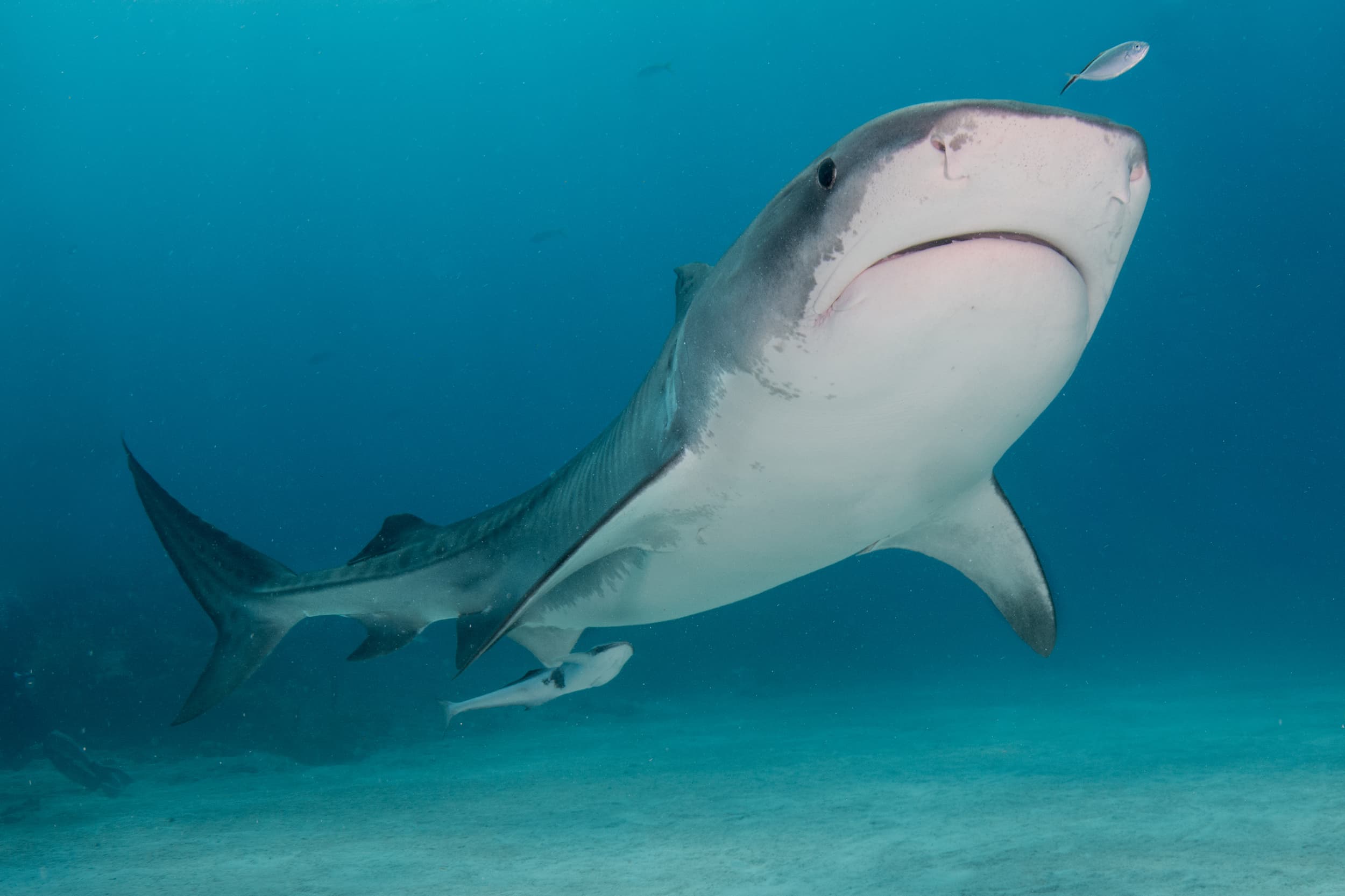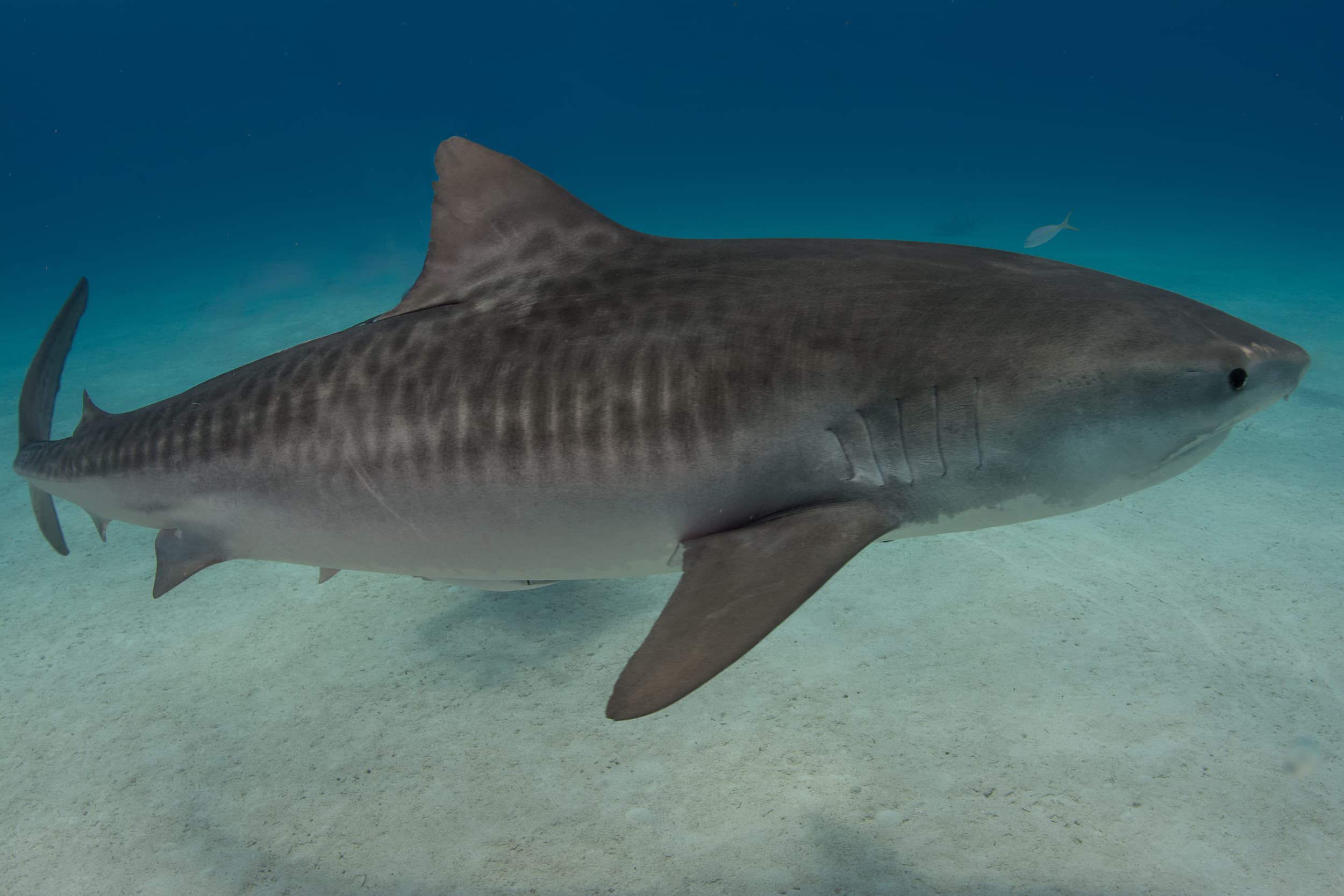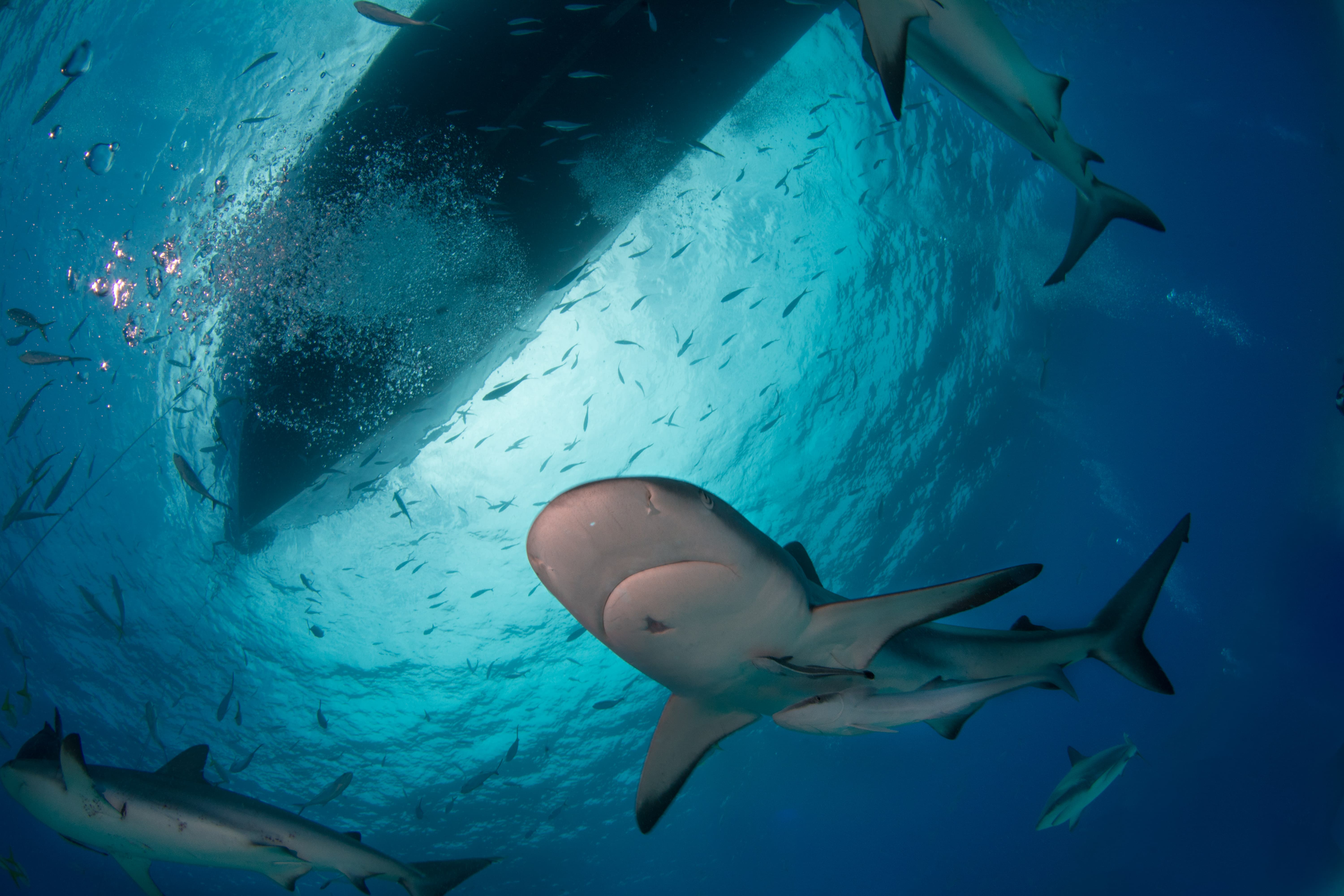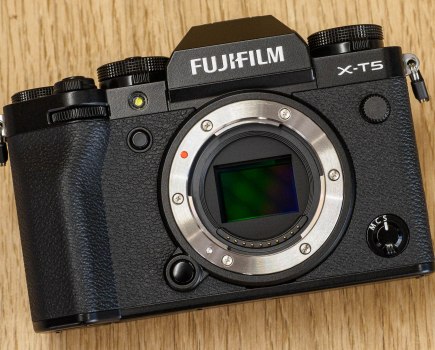Getting face to face with a shark is unlikely to be everyone’s idea of a good time – but for wildlife photographer Harry Skeggs, the challenge was an incredible experience. During the experience, he was able to photograph tiger sharks, Caribbean reef sharks and nurse sharks. Here he describes how the project came to be, the equipment he uses, plus some top tips for underwater wildlife photography – if you’re brave enough!
Why did you decide to go to the Bahamas to do this project?
I wanted to take on this project as I was looking for a new challenge. I am an experienced topside photographer and have shot underwater before, but never on this scale – and so was keen to jump in at the deep end (excuse the pun!) and push myself. The trip was also inspired by my fascination towards big predators, especially sharks. There’s something special about standing in front of a photo of an apex predator and staring it in the eye – it’s intimidating. That is the feeling I have tried to create with this latest series. I’m also shocked by the reputation these animals have. It’s estimated six humans are killed by sharks a year worldwide, compared to up to 100 million sharks that are killed annually by humans – so it’s easy to see why their reputation is unjust!
What is it that intrigued you particularly about Tiger Sharks?
After the great white, the tiger shark is arguably the most deadly of sharks living in the waters. At up to 14ft long, weighing well more than a tonne, with heightened predatory senses and a mouth wide enough to swallow many humans whole – they are a fearsome masterpiece of evolution. That said, diving beneath the surface with these ‘mindless killing machines’ is not totally crazy, and that’s why I wanted to really explore the nature and natural habitat of these animals.

© Harry Skeggs


What kind of planning was involved in setting up the shoot / project?
The challenge with underwater photography is colour. Within the first ten metres, the water absorbs colours at the warm end of the spectrum including, reds, oranges and yellows. Tiger sharks tend to cruise close to the bottom of this range, so to capture the right colours, artificial lighting in the form of strobes is essential. However, this technique has a short effective range and to really capture a successful photograph you need to be within 2ft-4ft.
Strobes tend to exaggerate backscatter so it’s important to remember they are most effective in areas with clear water. As a result, a fair amount of research was required to find a location and time of year that would allow for these conditions and sightings. We also spent time researching the body language of tiger sharks to know when we would be outstaying our welcome, as well as diving practices to minimise scaring the sharks away – so we could both stay safe and maximise our time with these wonderful animals.
What equipment did you use to get your images? What waterproofing gear did you use?
I had a couple of bodies for the shoot: the truly exceptional Nikon D850 for its ability to shoot full frame in high resolution and the powerful cropped sensor Nikon D500. Wide angle lenses were also essential as I needed to get so close to these fearsome animals. I used an AF-P DX NIKKOR 10-20mm f/4.5-5.6G VR on the D500 and an AF-S NIKKOR 16-35mm f/4G ED VR on the D850, both of which I kept at the widest focal ranges. I have to say that both lenses performed well for me throughout the shoot.
Using this kit forced me to get as close as possible to the shark. It’s amazing how close you can feel to them, look through the viewfinder and they’re just a pixel! To fill the frame, the sharks need to be pressed right up against the dome port, at which point the strobes would be able to work their magic.

© Harry Skeggs
In terms of waterproofing, I used some reliable DSLR housing to prevent flooding and a strobe kit to create artificial light. I partnered this with a soft housing for shallower depths. Shooting underwater is like shooting in the toughest conditions you can imagine topside, and I did in fact flood the D850 on the last day.
Are you already an experienced diver?
I have dived all over the world from Papua New Guinea to the Caribbean, but underwater photography has, until now, taken a bit of a back seat. Going forward, it is something I will be focusing on more closely. I think before anyone considers shooting underwater, they need to know how to dive or should take lessons to ensure they are a competent diver. This form of photography is a complex skill and needs a lot of thought and practice.
What was it like to get so close to the sharks? Were you scared / worried at all?
It was something I wondered about before the shoot. I knew I had to get close, very close in fact, and I did find myself second-guessing how I would feel. But as soon as I put my head beneath the waves and saw the ocean giants cruising the depths I knew I had nothing to fear.

© Harry Skeggs
In fact, I was more excited than I have ever been. None of the sharks here pay you the slightest attention; you can be in the water with upwards of 50 sharks and they are so calm. I instantly fed off this. Even when shooting amidst a feeding frenzy, the sharks are acutely aware of where you are, they don’t bump into you. They are respectful predators.
However, it’s important to remember that we are in their realm and the danger comes not from them, but from our selves and our equipment. In fact, I had an accident out there where a tank cut out at depth, and we were too deep to surface. This meant a long swim on no air to my diving partner before we could emergency ascend together to our safety stop. It’s at this point I want to say a huge thank you to Tom Mills, my dive partner, who was there when I needed him. I also want to remind everyone of the importance of diving in pairs and keeping to your drills in stressful situations. If we hadn’t the results would have been very different.
What do you hope to show with these photographs?
I want to help dispel the myth that these animals as monsters.
If a photographer like me can spend time just a few feet from hundreds of sharks without a scratch, then they can hardly be senseless killers. I wanted to help raise awareness for these creatures – as they aren’t as loved as land predators and I think people perhaps don’t concentrate on conservation efforts in the same way.

© Harry Skeggs
You can see more of Harry’s excellent wildlife photography on his website, as well as in an upcoming issue of Amateur Photographer.
Harry’s top tips for underwater photography
- Respect these animals and they will do the same. They are not to be feared, just understood!
- Get close, and then get closer. It’s so important to position yourself in this way to minimise the water between you and the subject so that the strobes can be effective and the clarity of water doesn’t impede the photo.
- You must have greater patience than standard topside photography where you can fire a burst of photos. Under the waves you need strobes, and they recycle slowly – if you fire too early, you may miss the right frame, so you need to hold out until the perfect moment. It’s a different approach but somewhat rewarding, and certainly reduces the number of shots you have to sift through after the trip.
- Know your camera and equipment inside out before you go under the waves. You can largely set your settings pre-dive (f/8 1/125 ISO 200 is always my starting point in clear water) but it can be difficult to work out where settings are under water if they are unfamiliar, so this needs to be muscle memory.
- Pre-visualisation is even more important underwater than topside. There is so much going on that it’s easy to get distracted. Your time to capture the perfect shot is limited thanks to the limited air supply from your tank and the constraints on dive times due to decompression limits time so it’s easy to surface with nothing special. I prefer to decide on a shot pre dive and spend that dive perfecting it.








